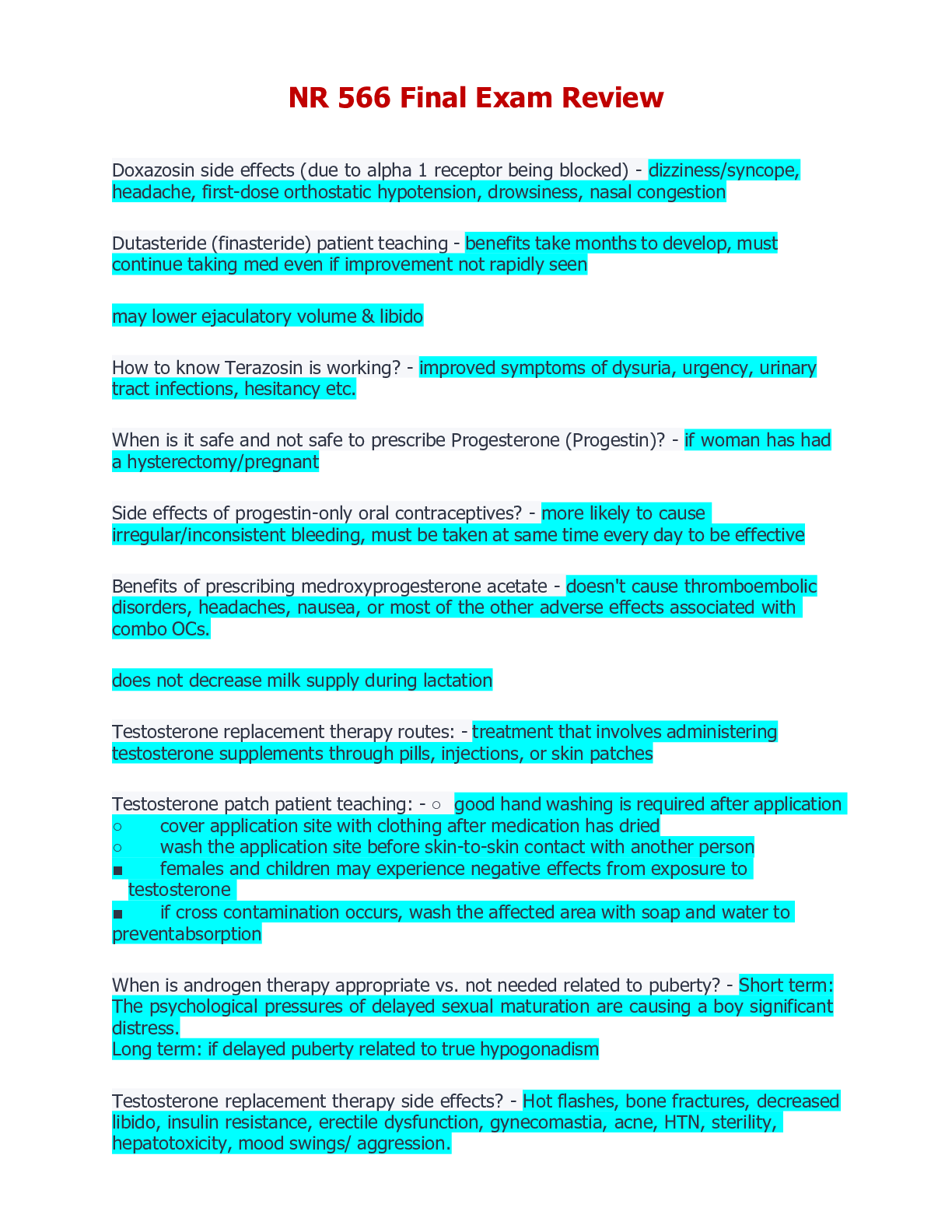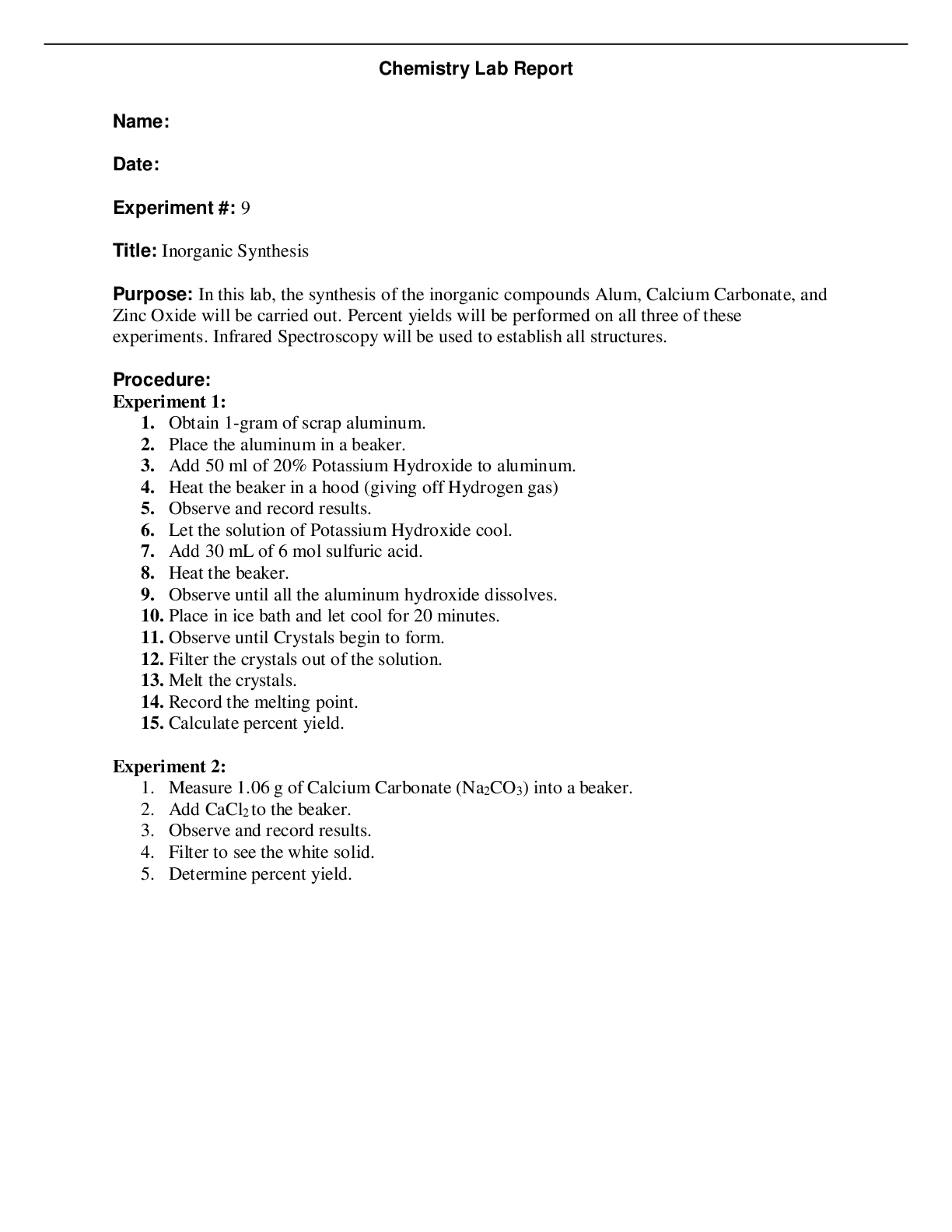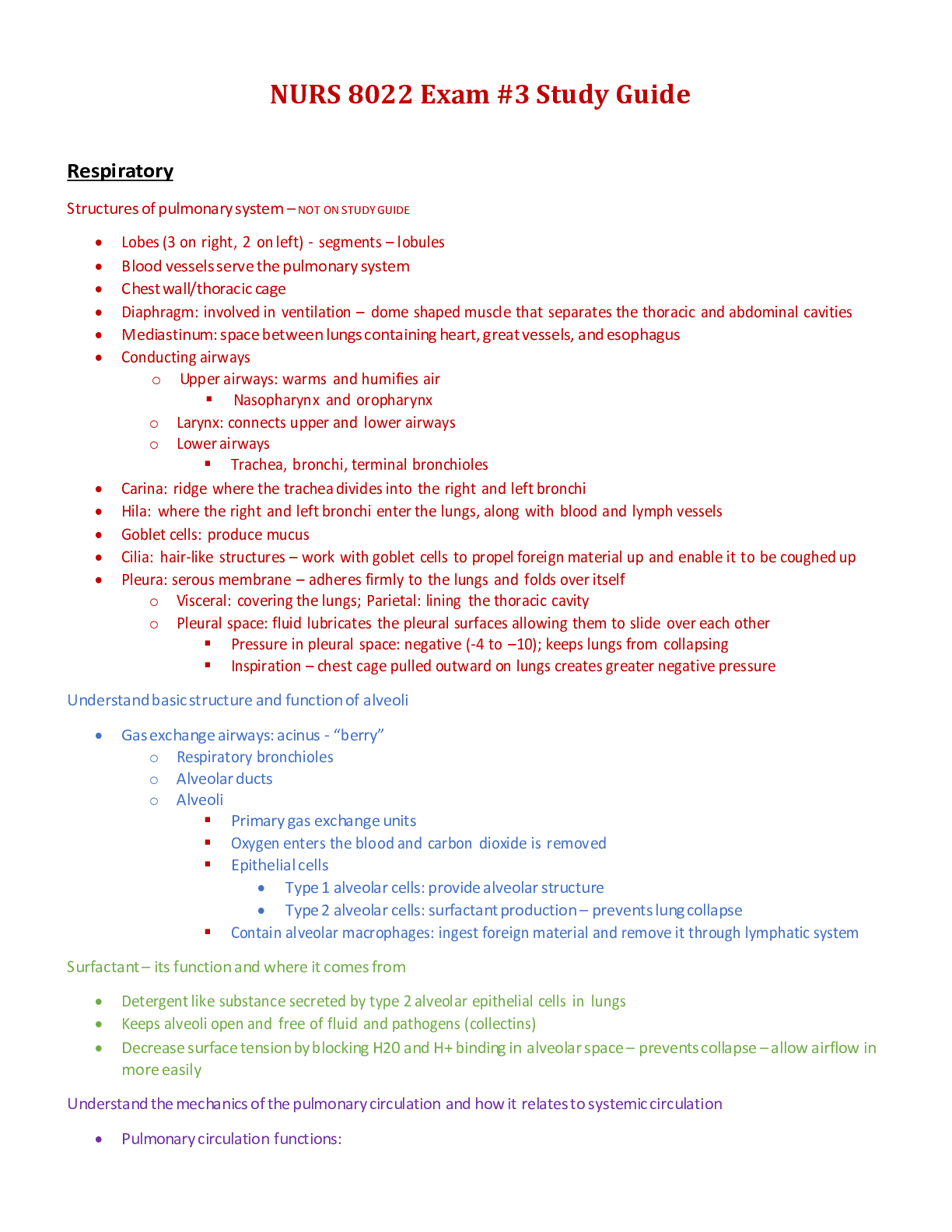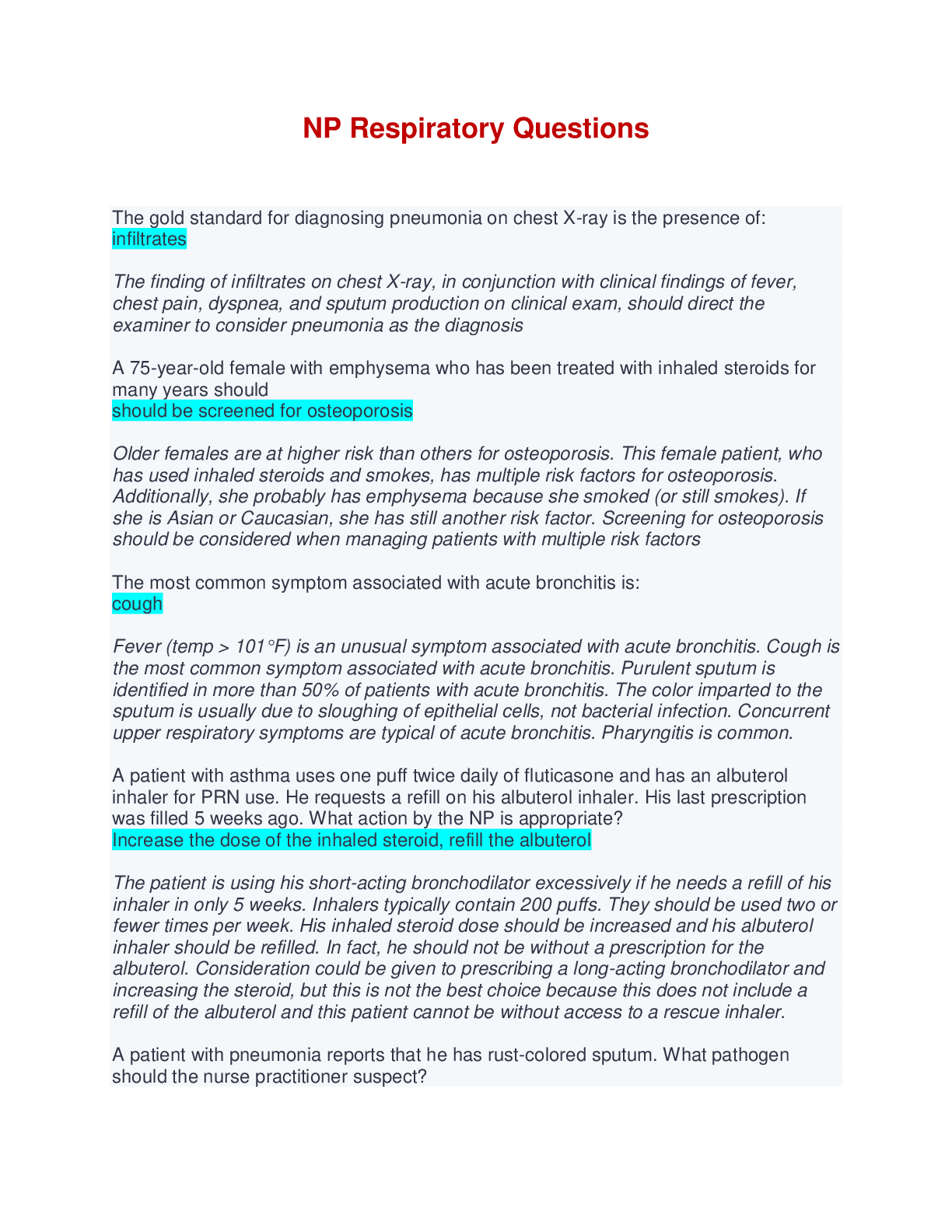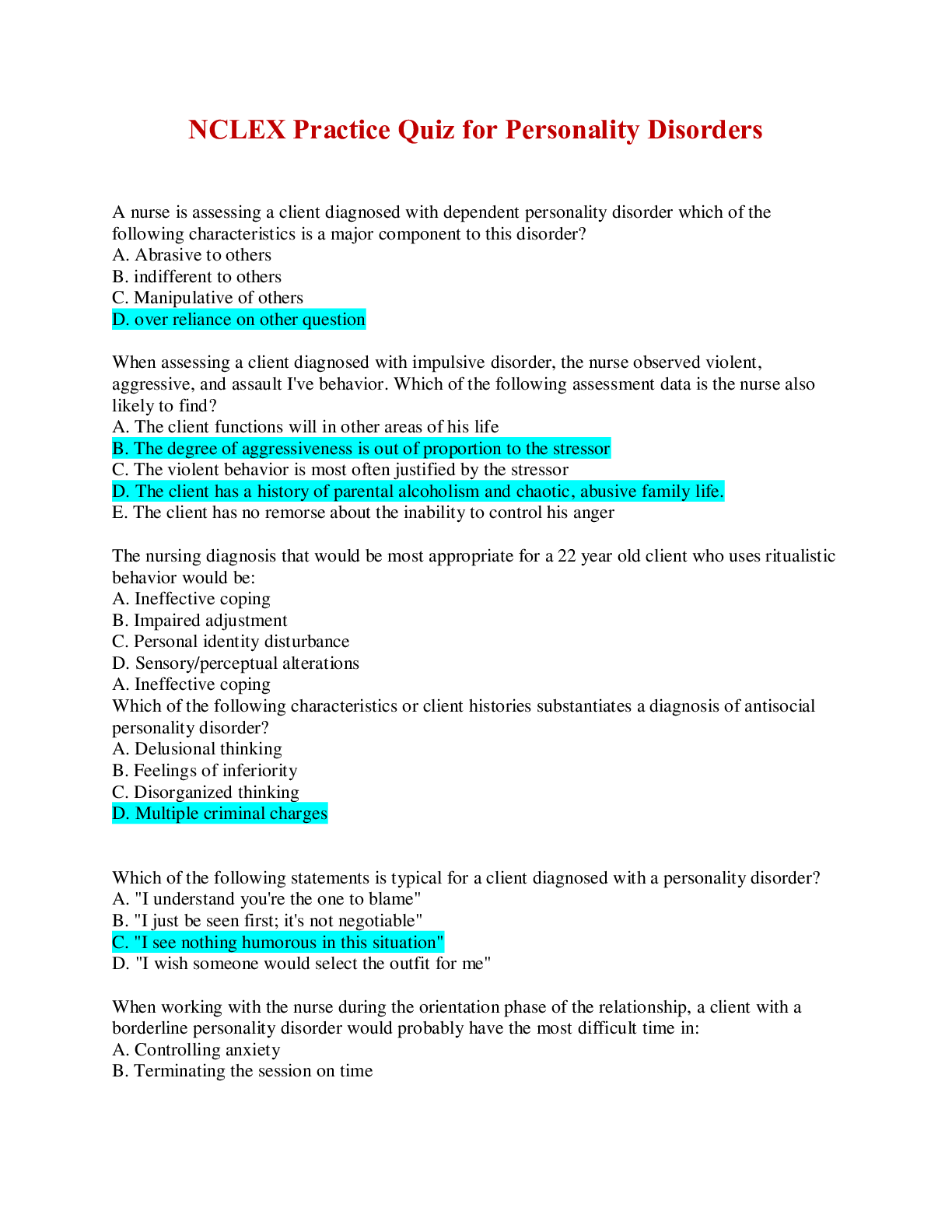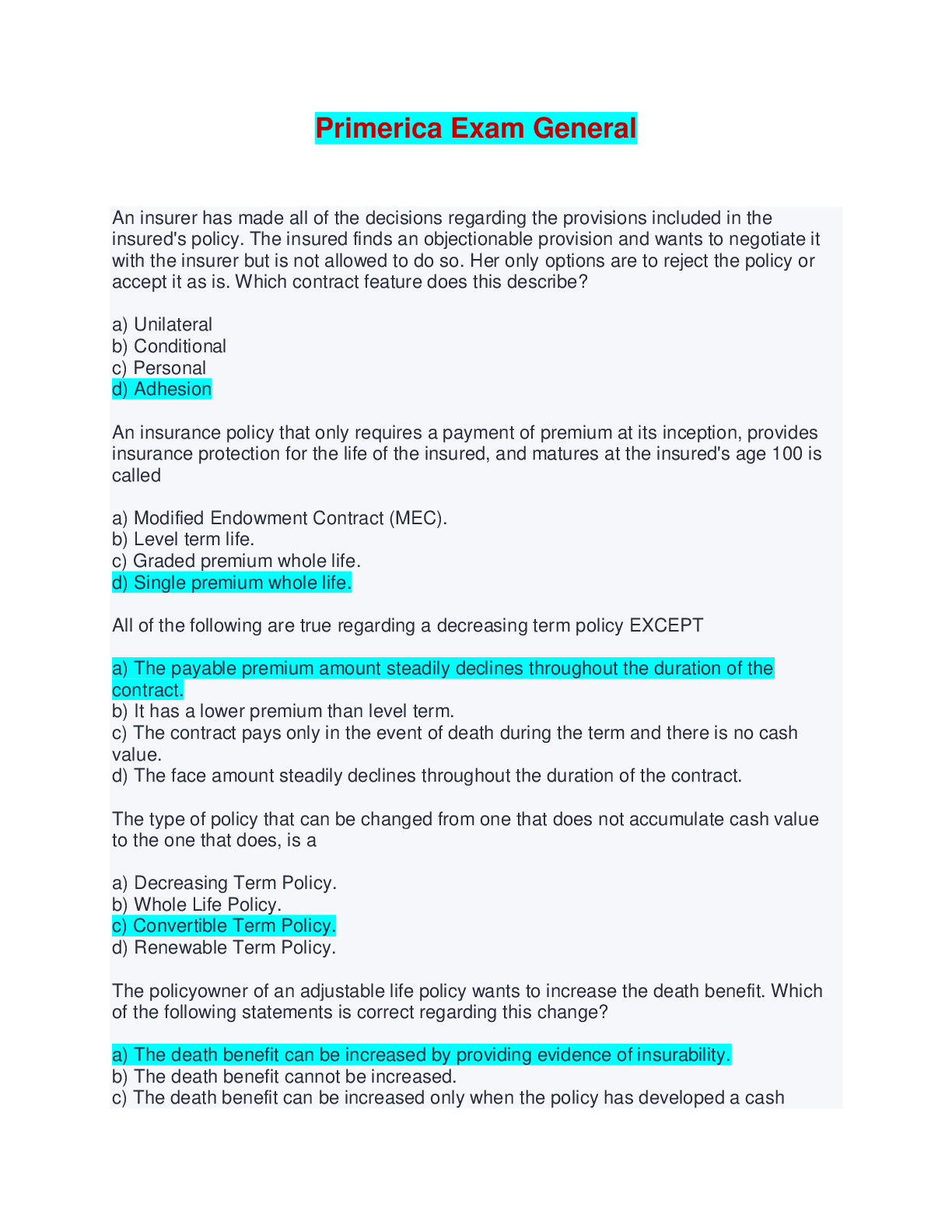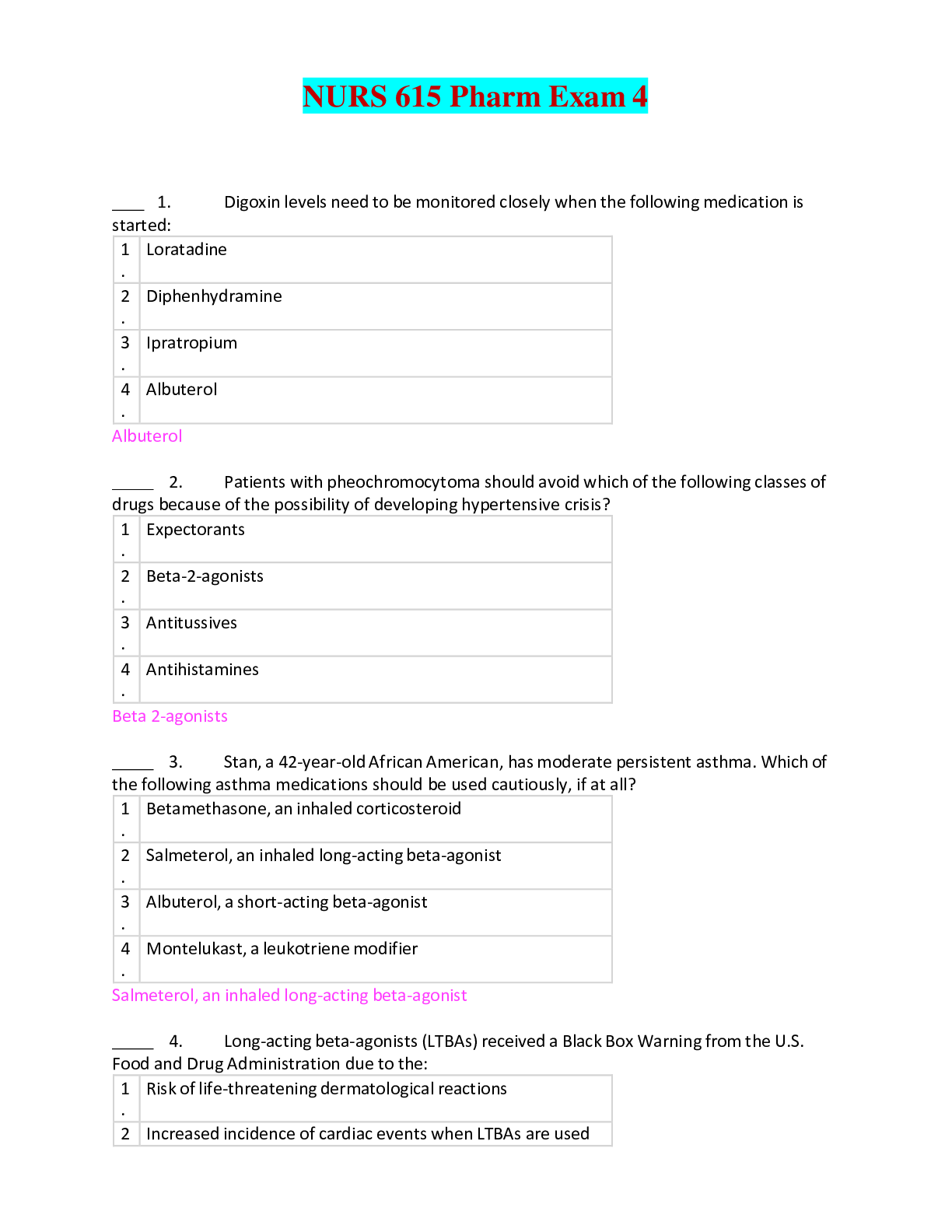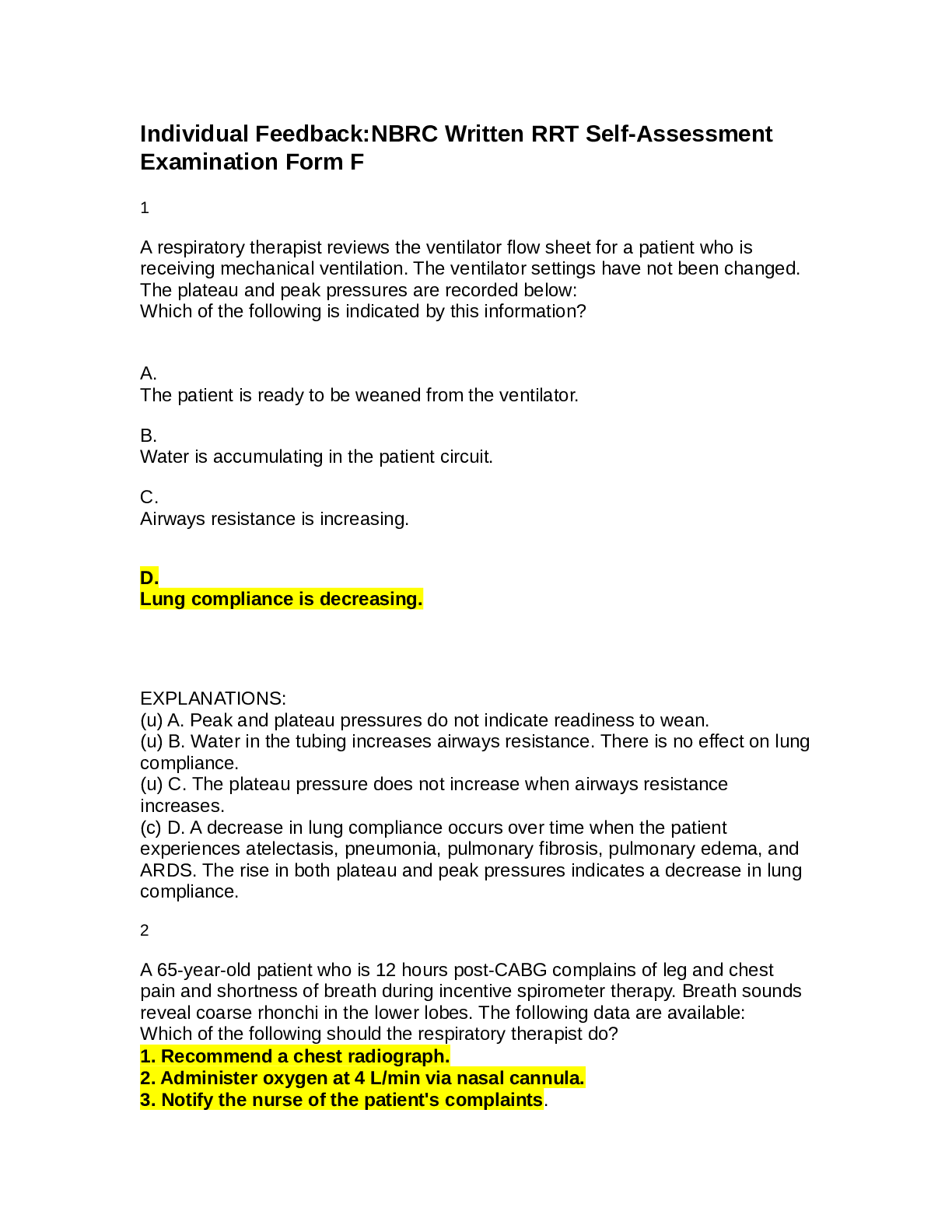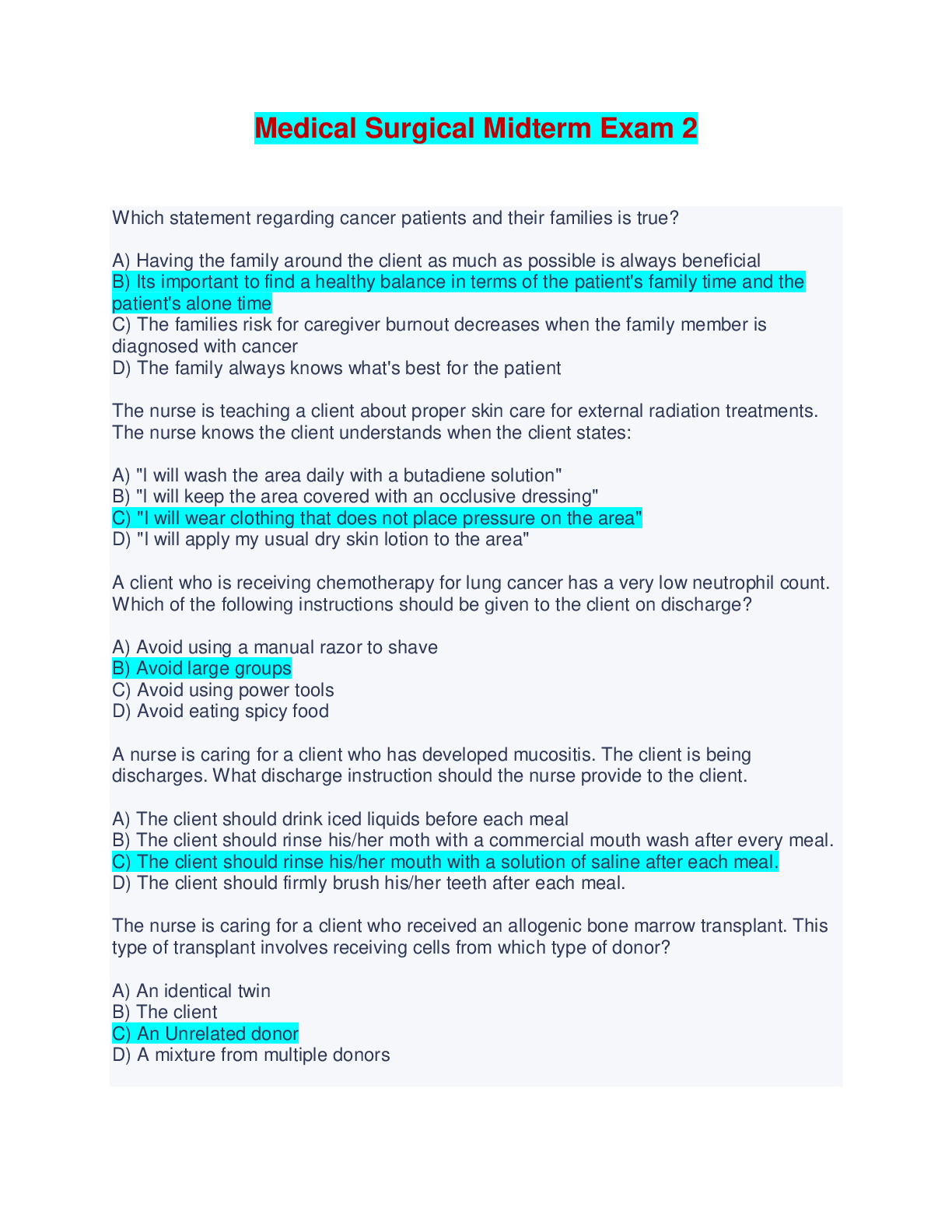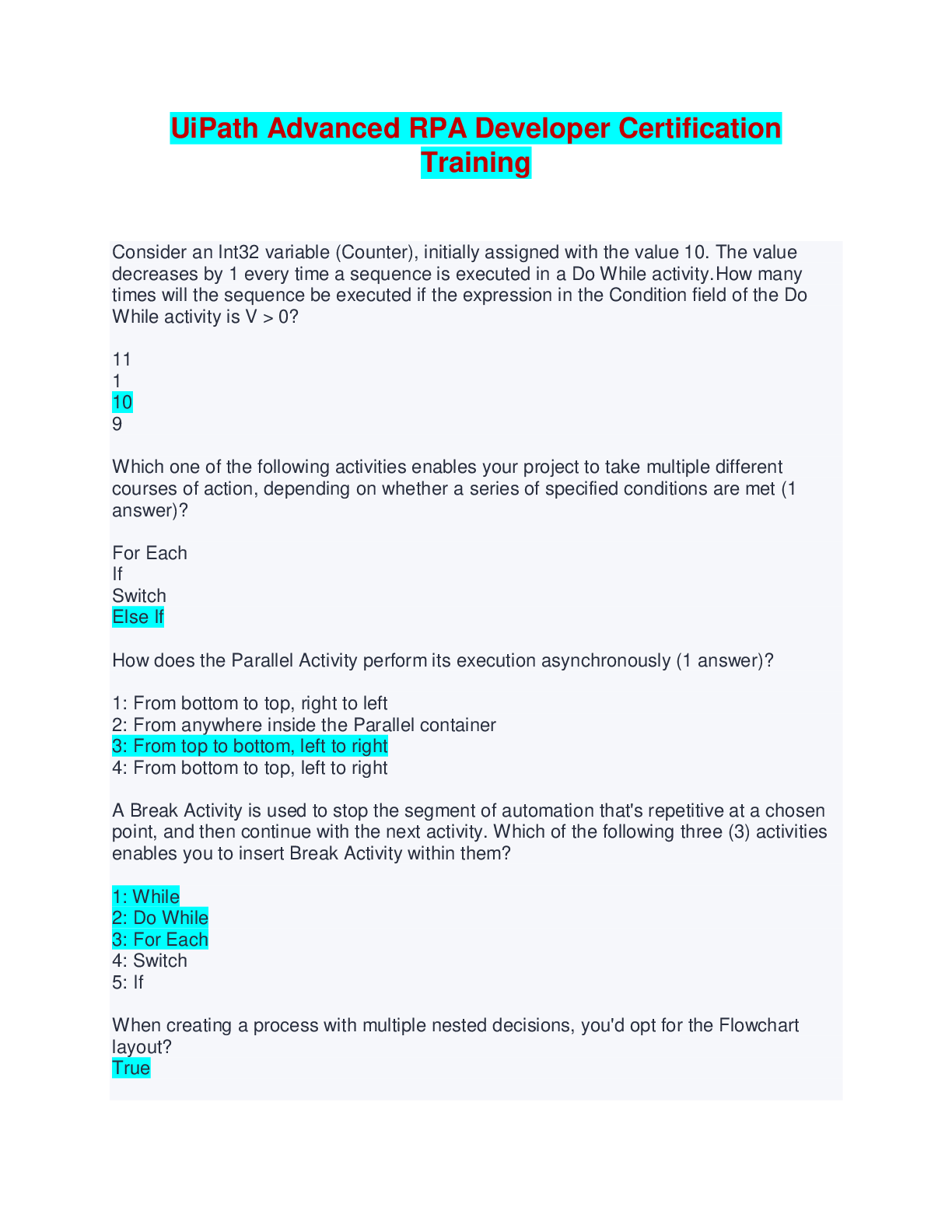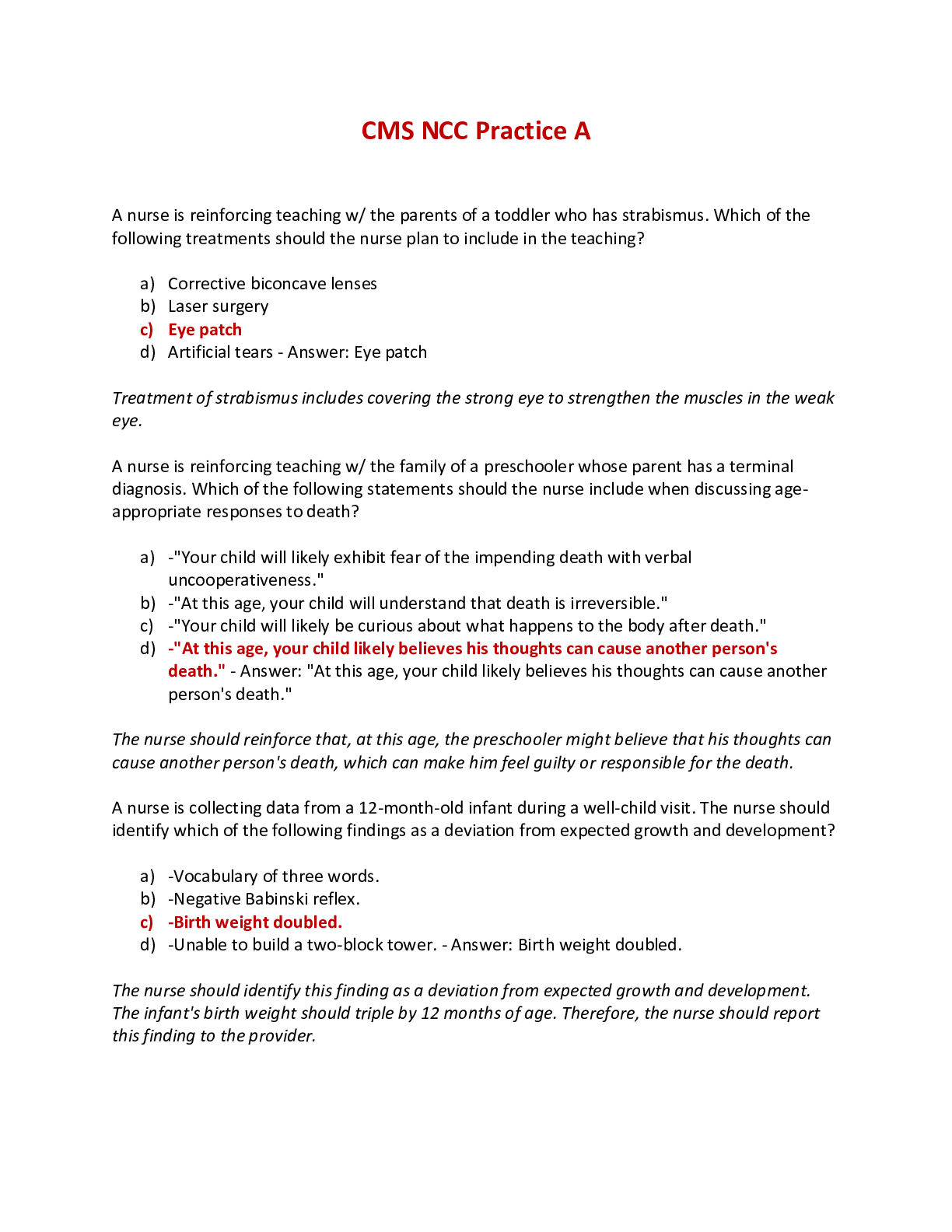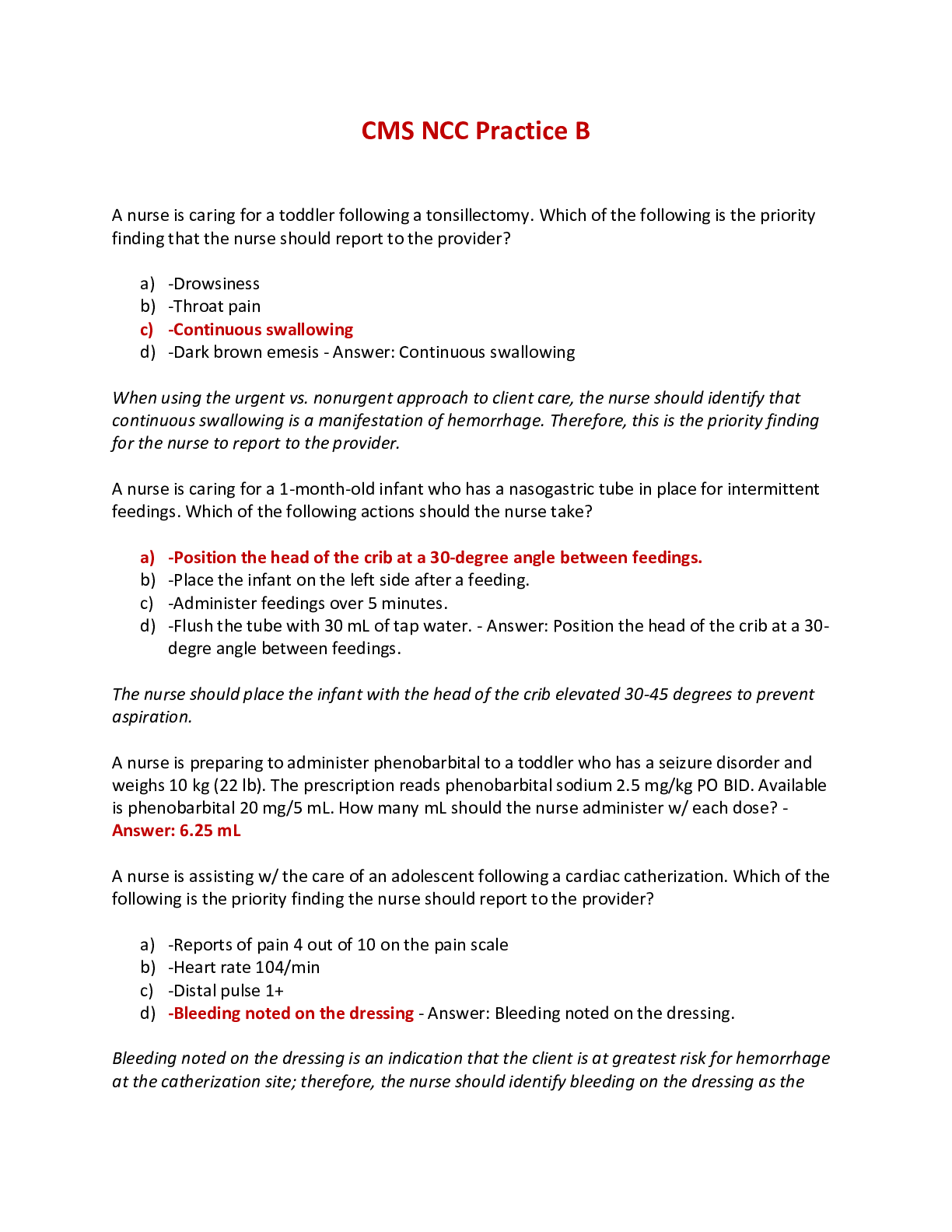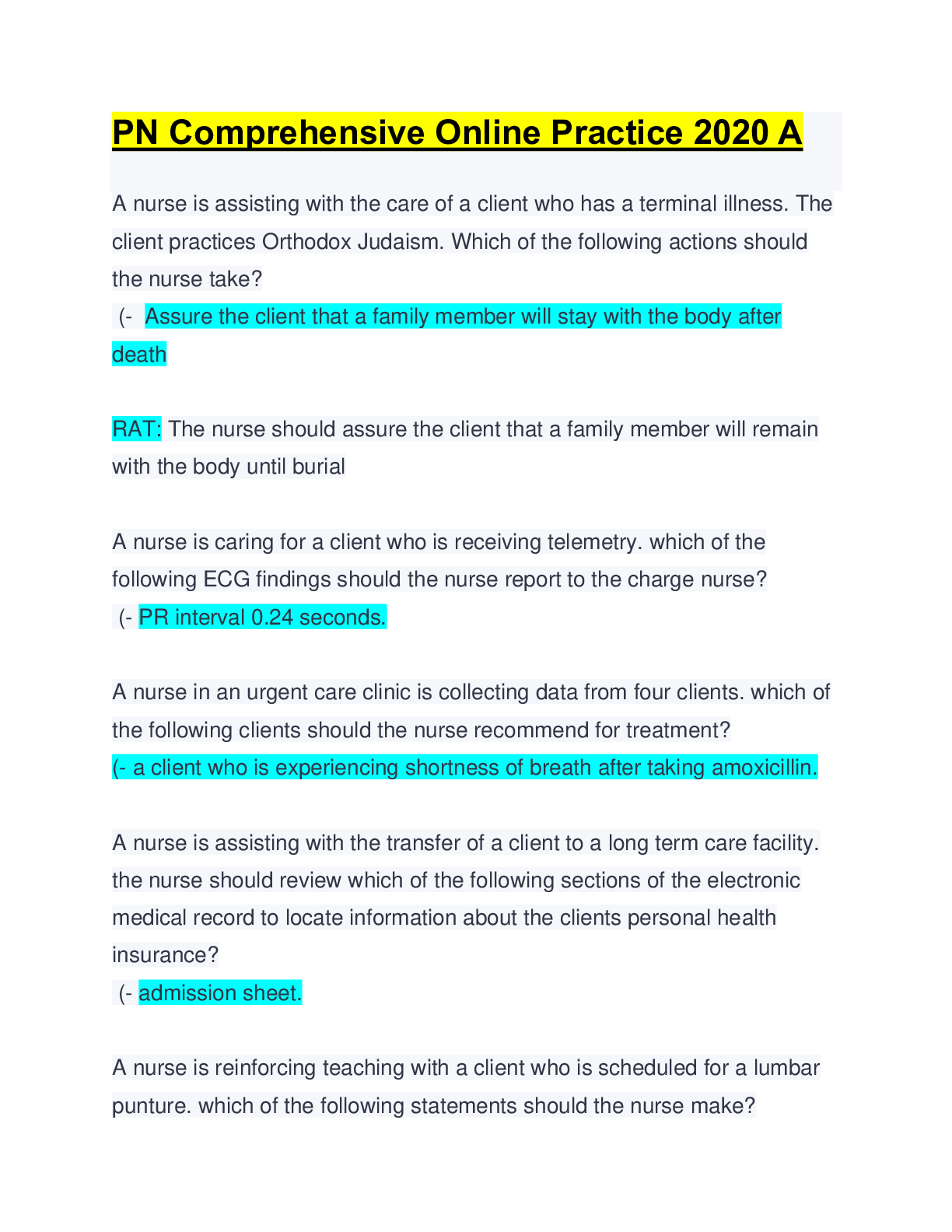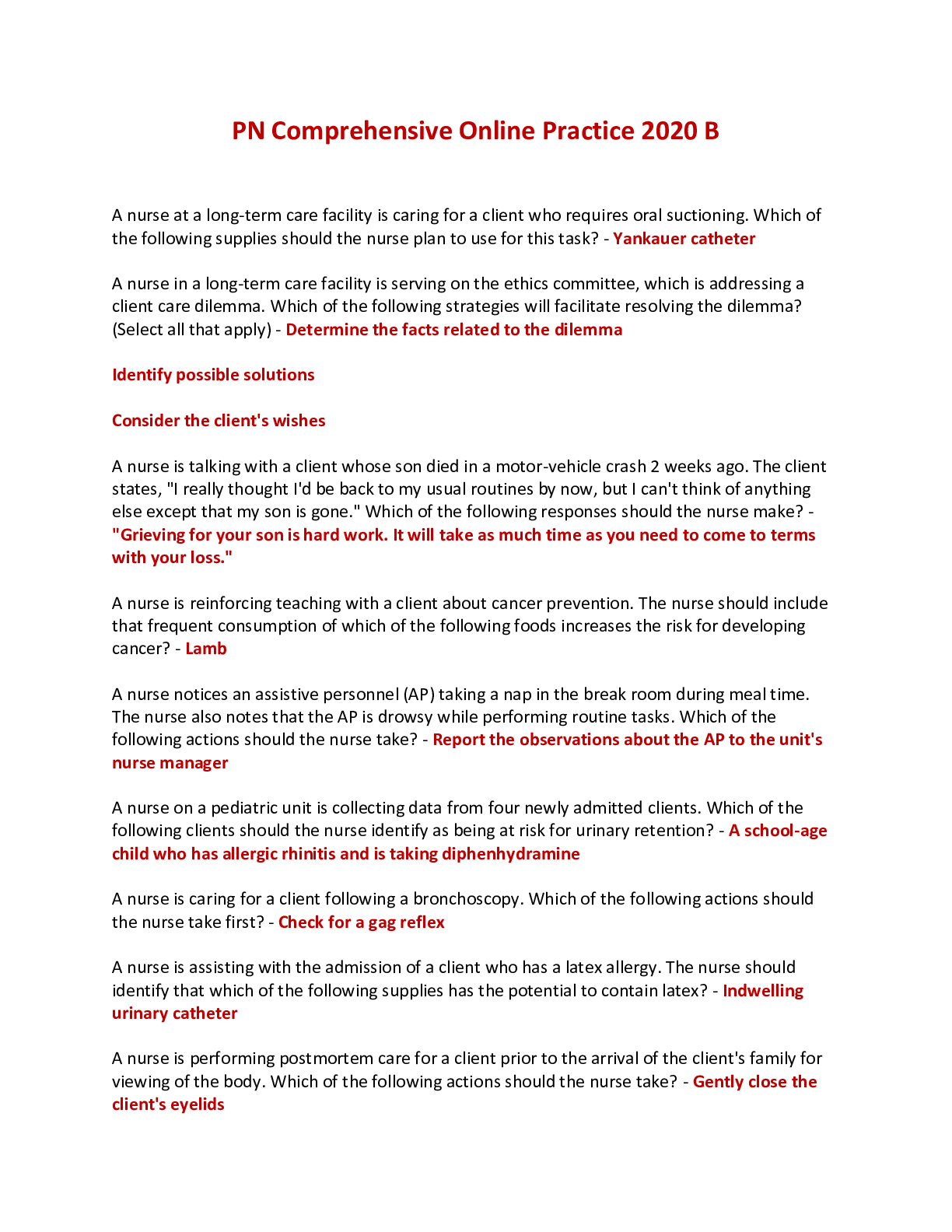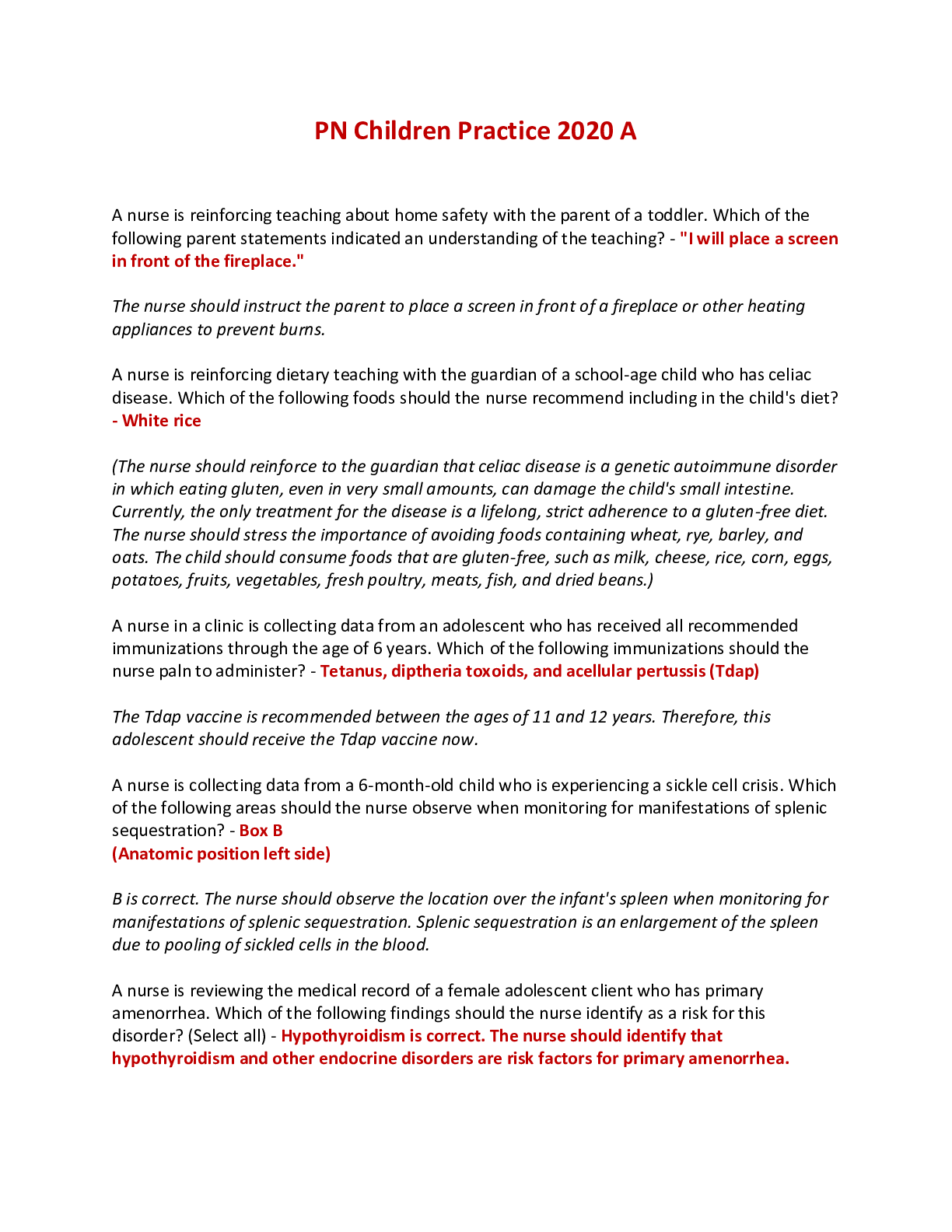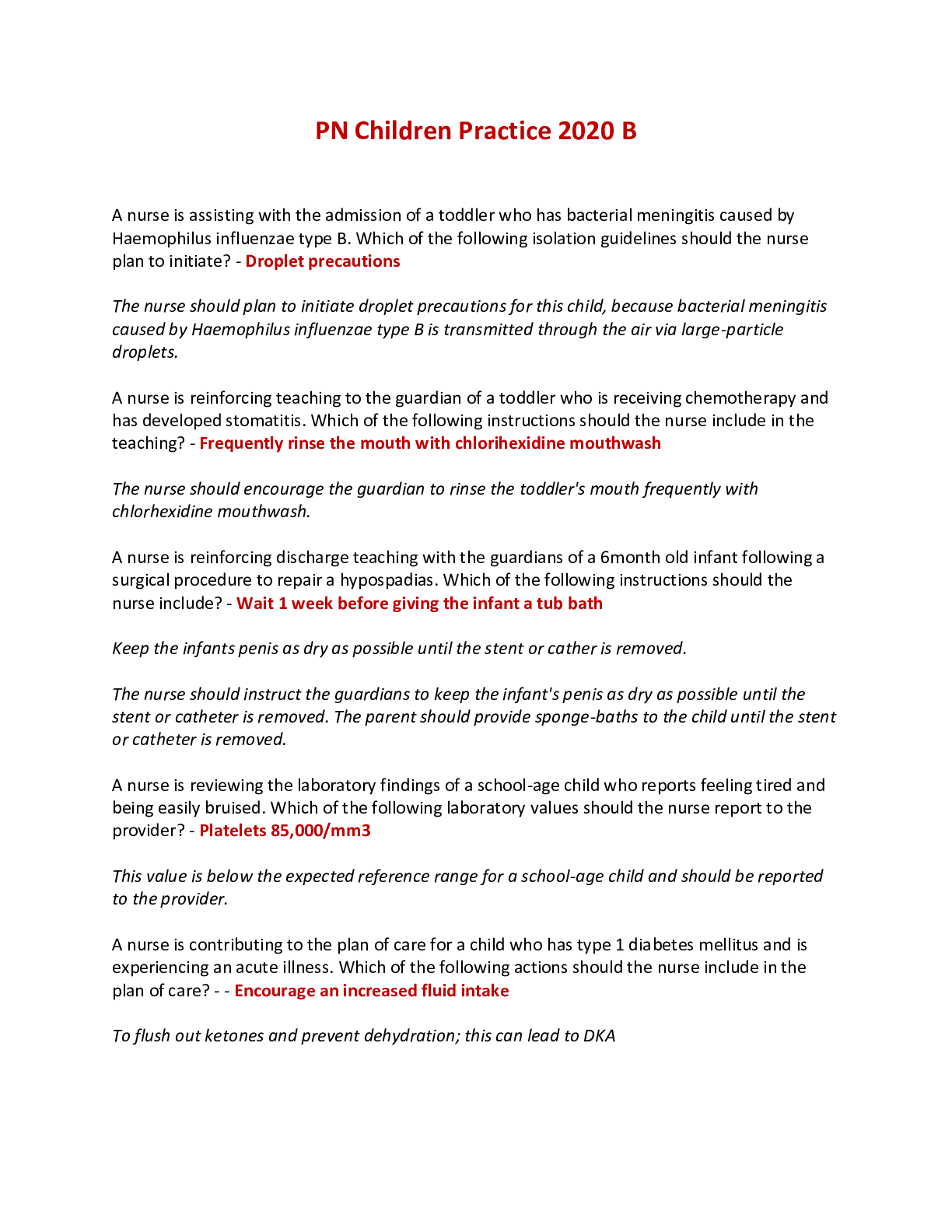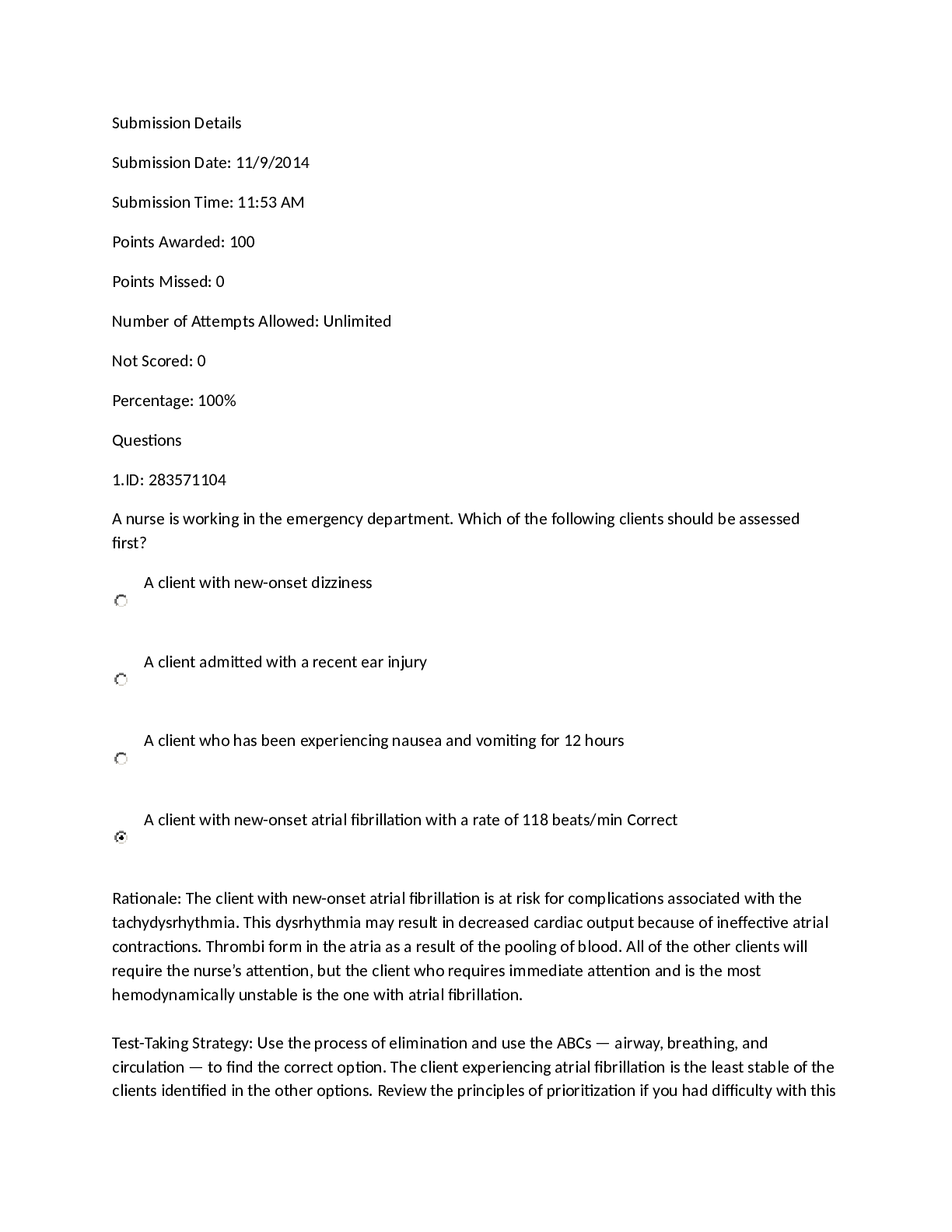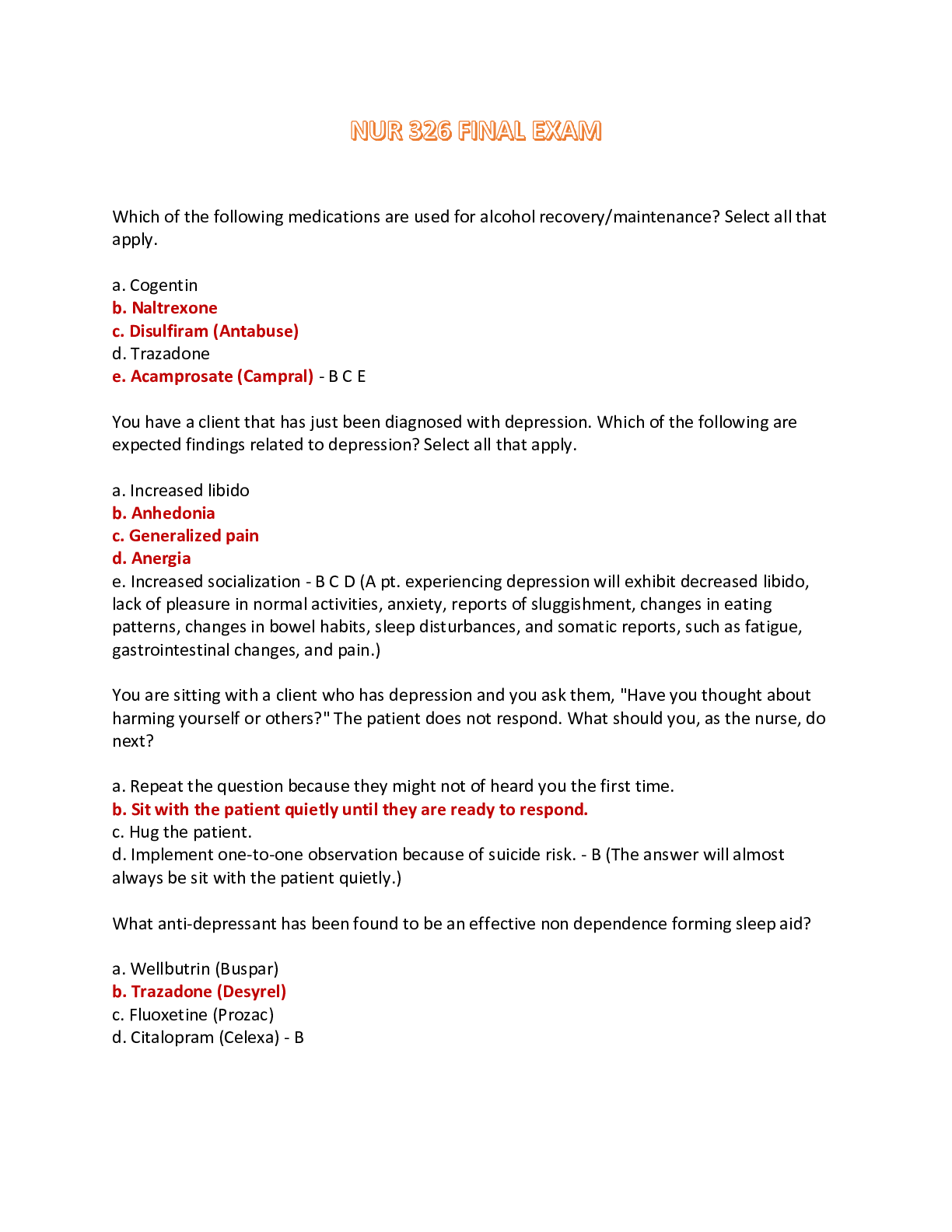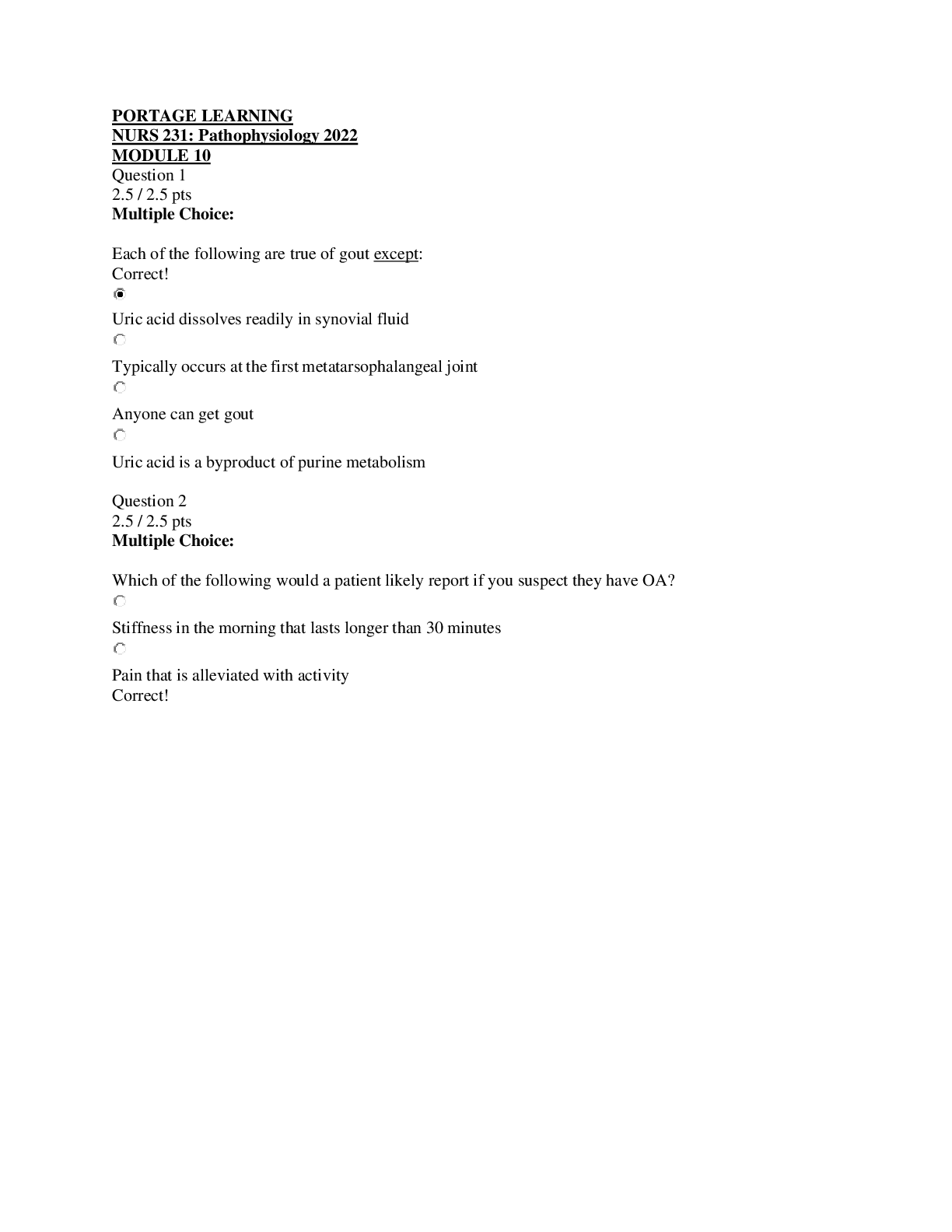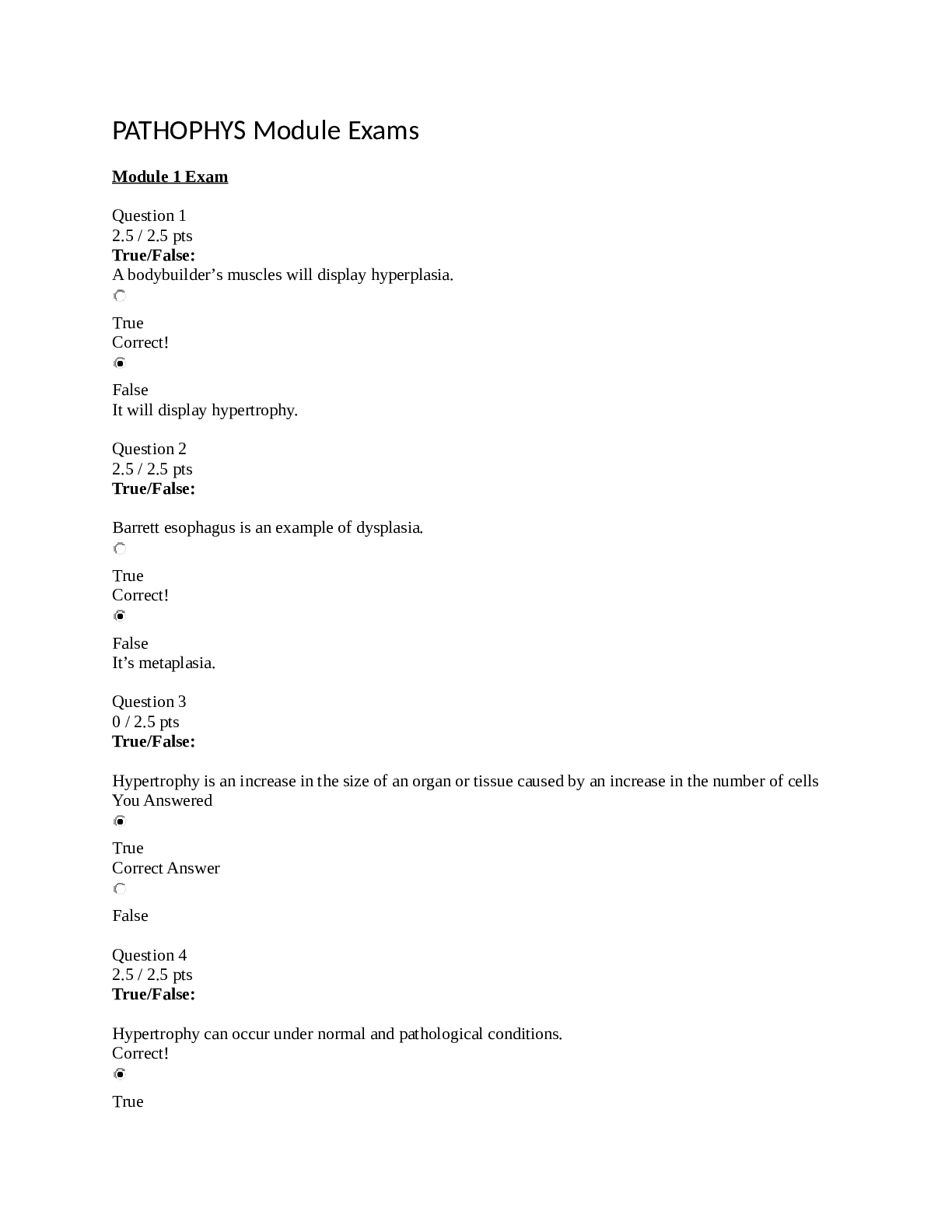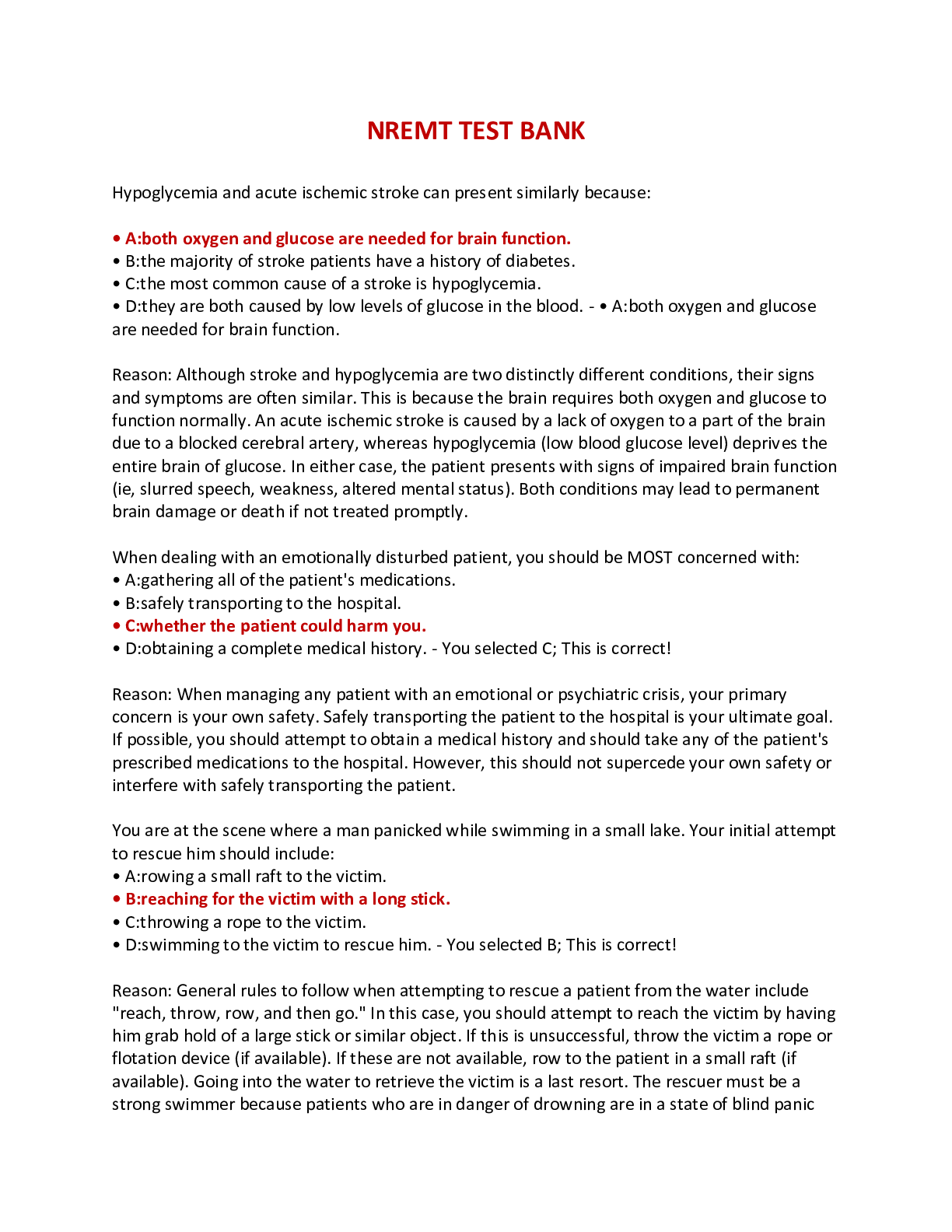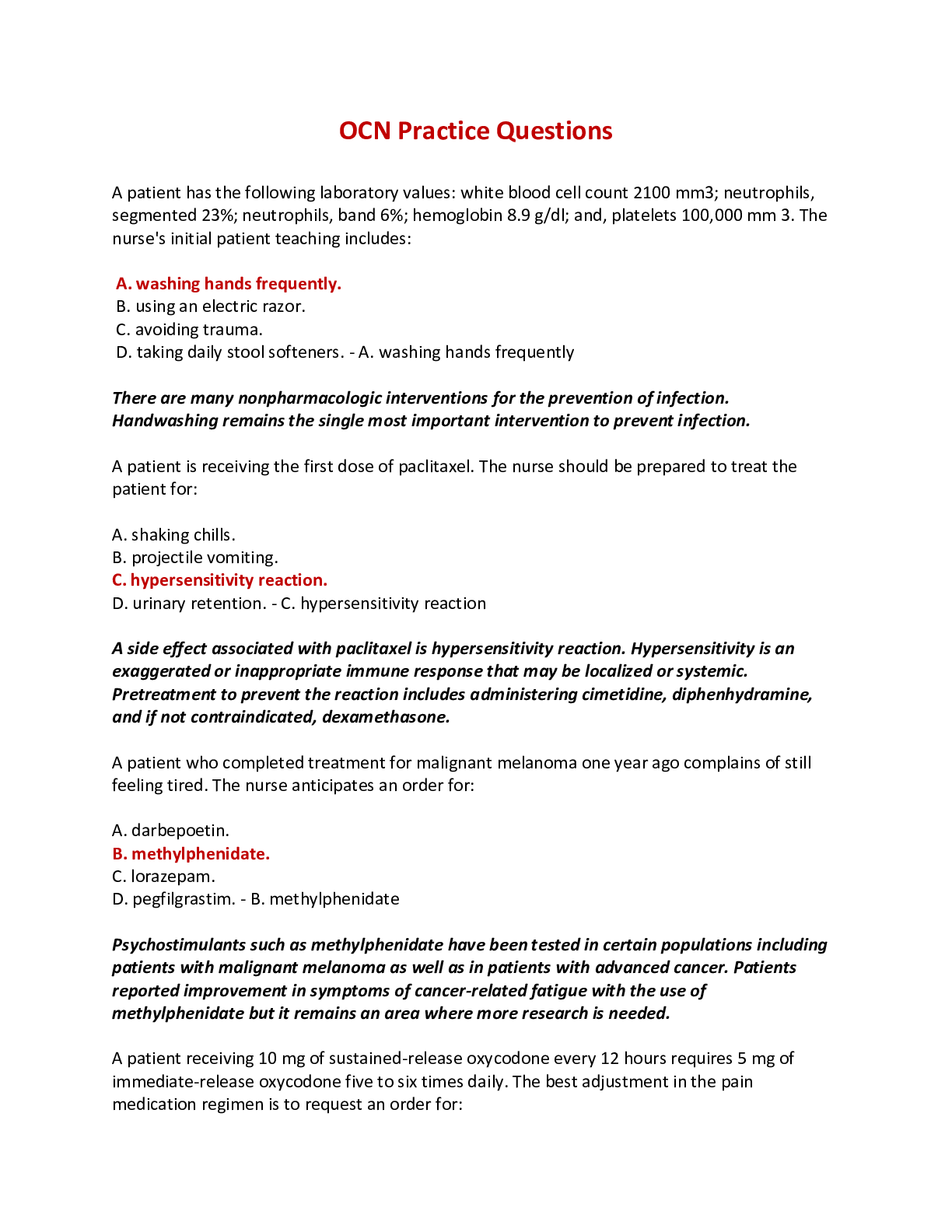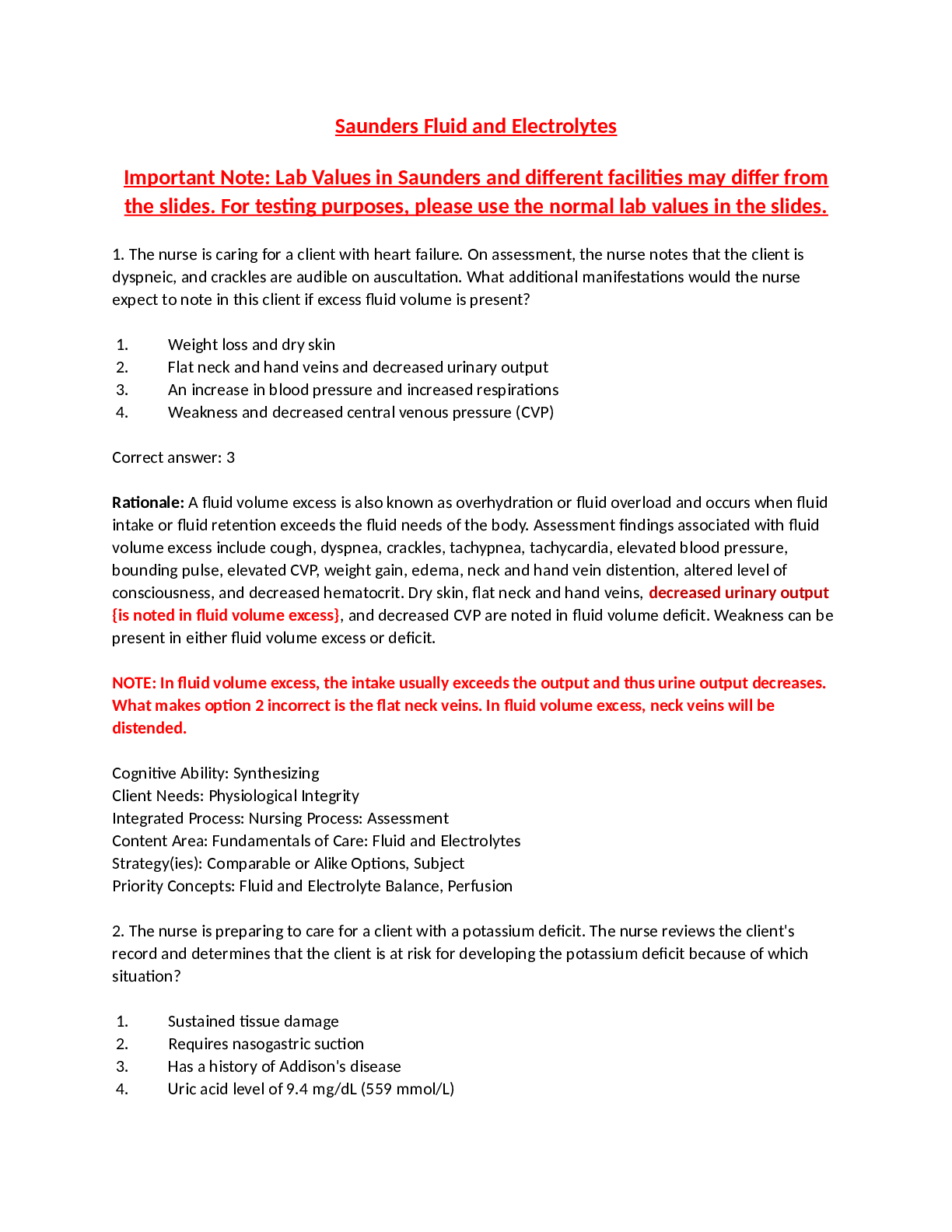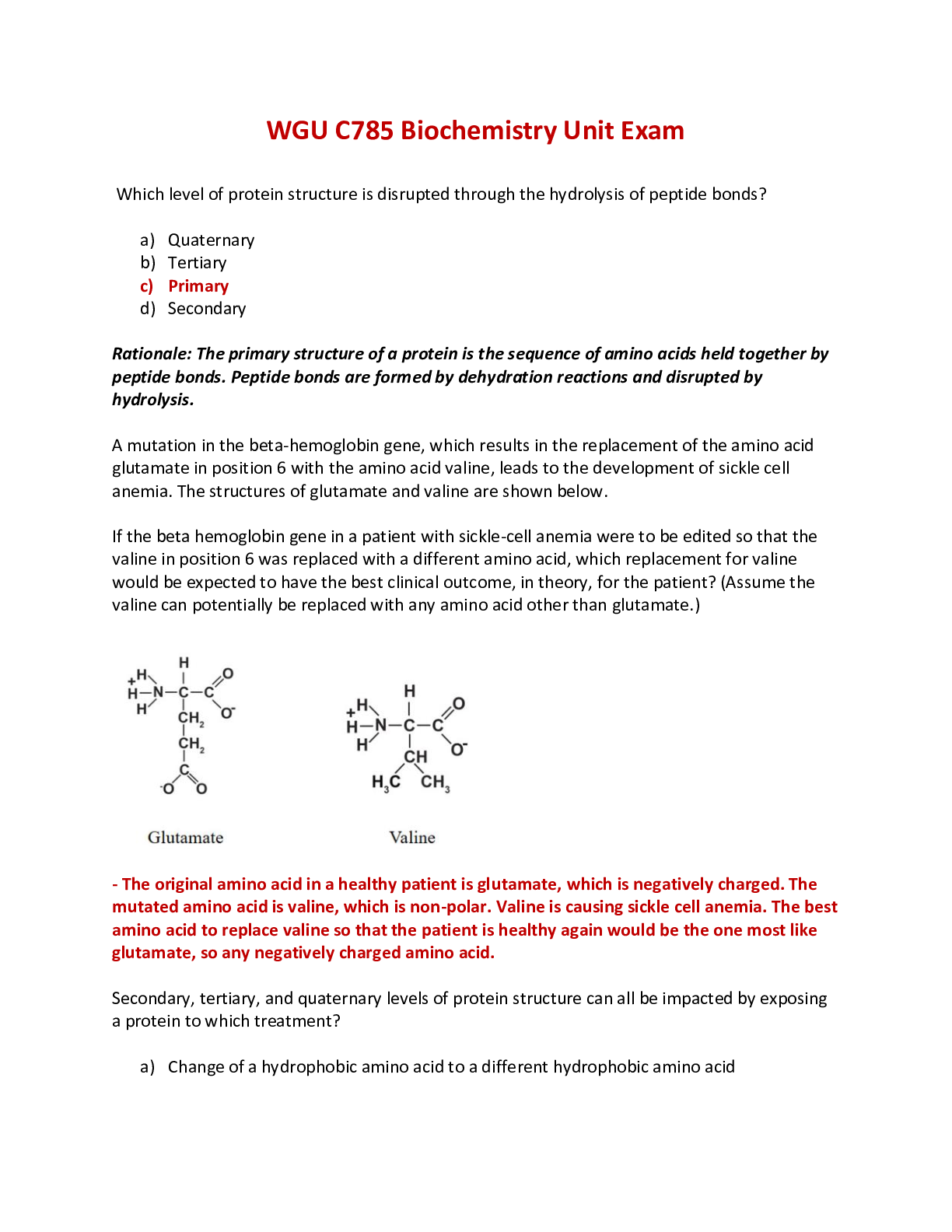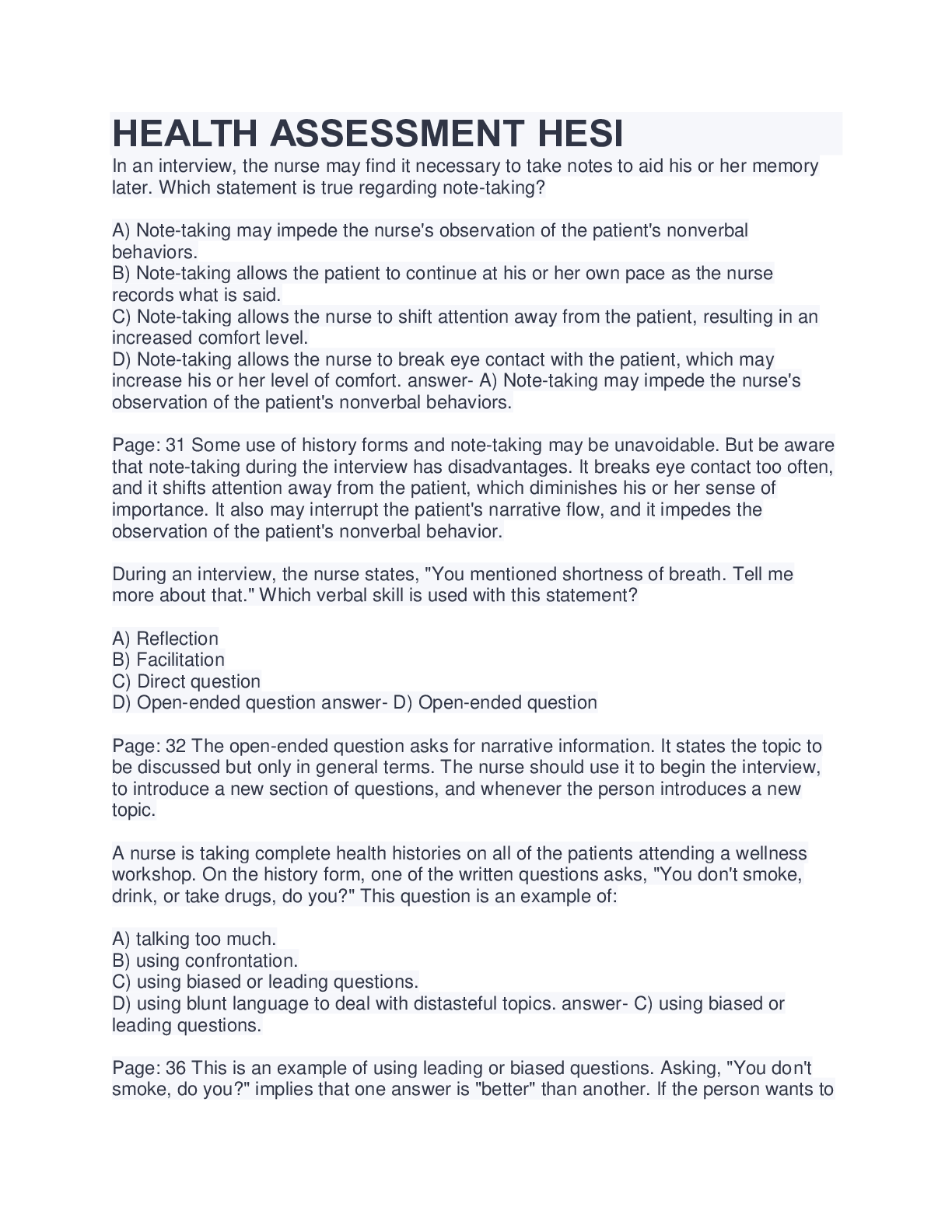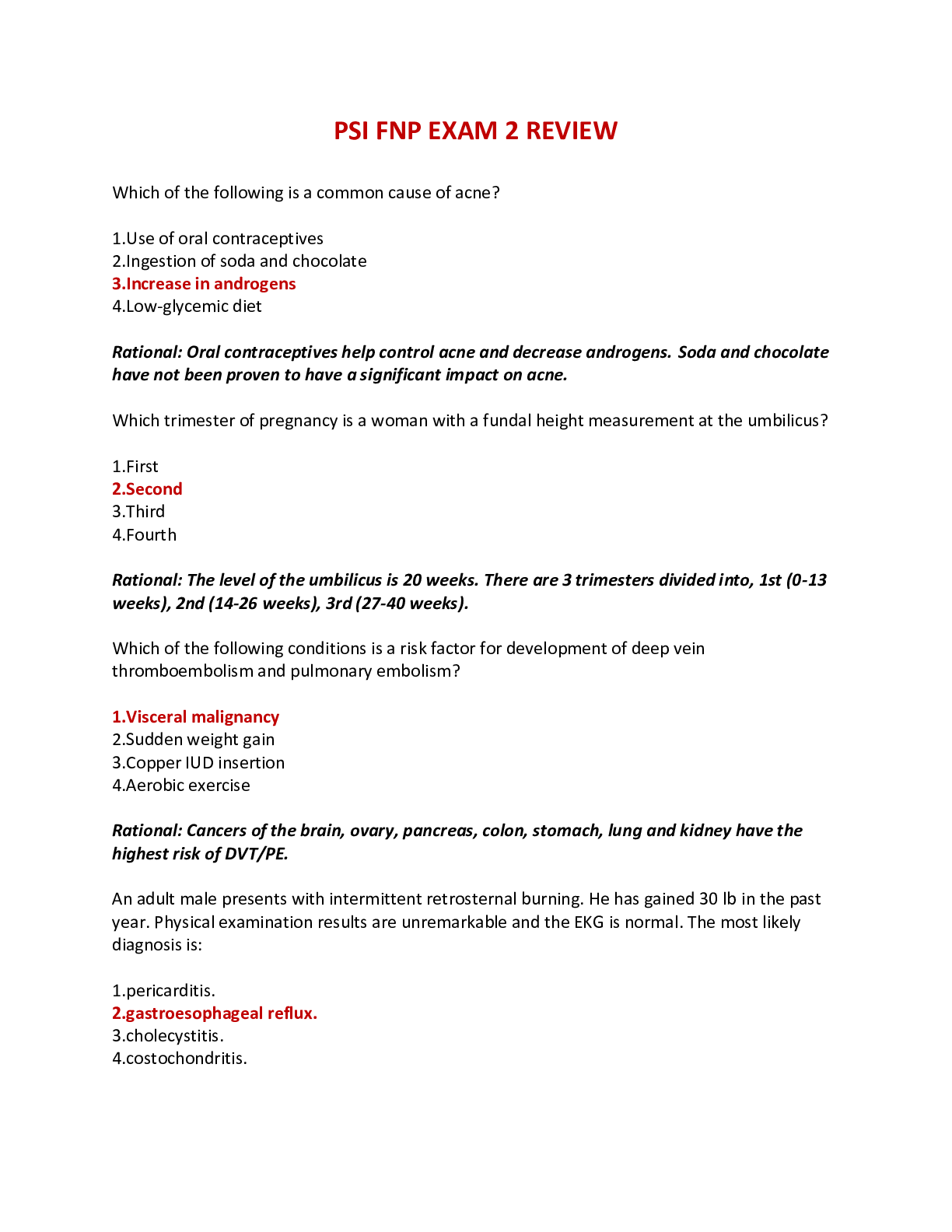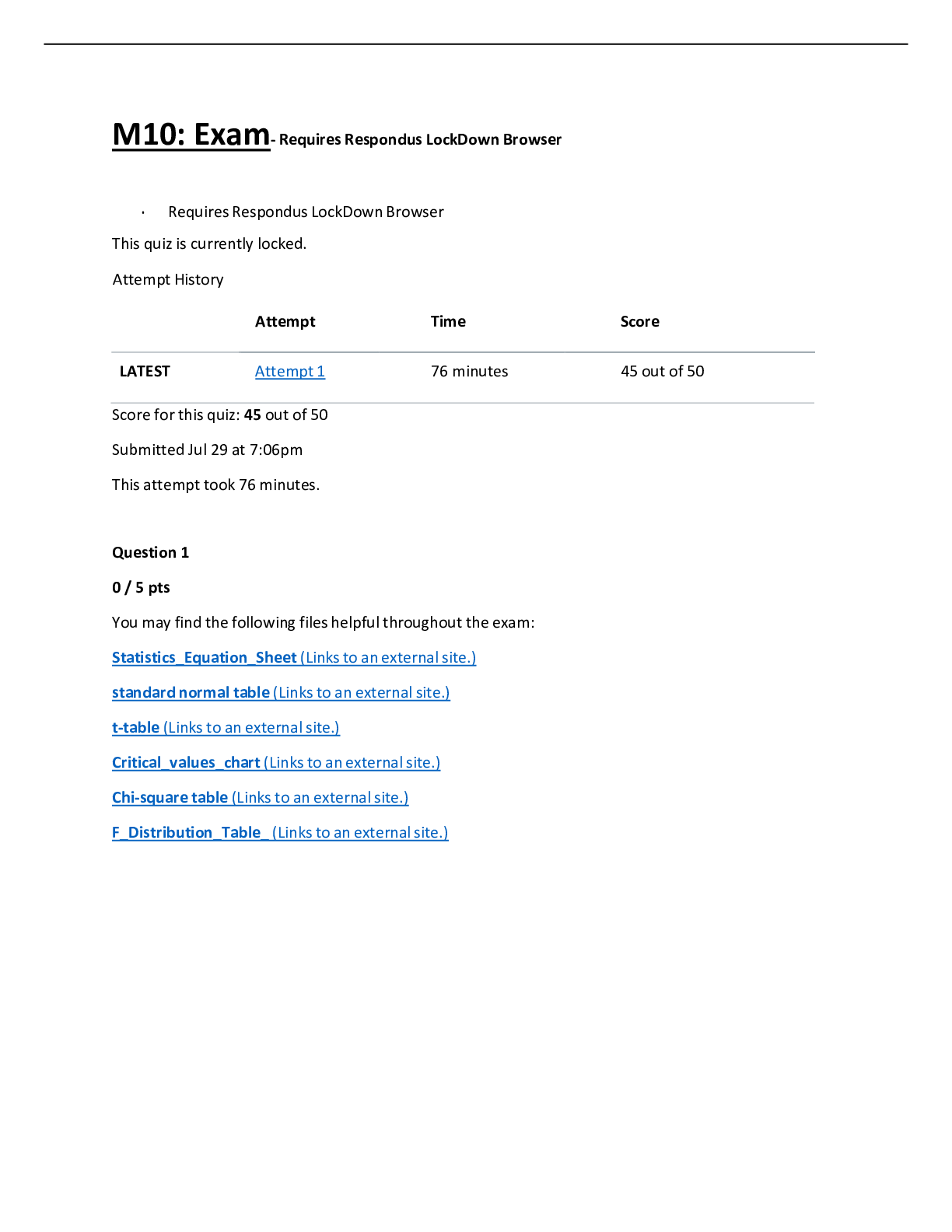HESI PN Module 10 Exam - Questions, Answers and Rationales
Document Content and Description Below
HESI PN Module 10 Exam - Questions, Answers and Rationales A client who is recovering from a brain attack (stroke) has residual dysphagia. Which measure does the nurse plan to implement at mealtimes... ? A) Giving the client thin liquids B) Thickening all liquids served C) Giving foods that are primarily liquid D) Placing food in the affected side of the client's mouth Rationale: The client with dysphagia may be started on a diet once the gag and swallow reflexes have returned. Liquids should be thickened to help prevent aspiration. Food is placed on the unaffected side of the mouth. The client is assisted with meals as needed and is given ample time to chew and swallow. A nurse is teaching a client who is experiencing homonymous hemianopsia after a brain attack (stroke) about measures to overcome the deficit. The nurse reinforces which client instruction? A) Wear eyeglasses 24 hours a day B) Wear a patch on the affected eye C) Turn the head to scan the lost visual field D) Keep all objects in the impaired field of vision Rationale: Homonymous hemianopsia is loss of half of the visual field. The nurse instructs the client to scan the environment to overcome the visual deficit. The nurse encourages the use of personal eyeglasses to improve overall vision, but it is not necessary to wear the glasses 24 hours a day. The client should keep objects in the intact field of vision whenever possible. An eye patch is of no use because the client does not have double vision. A nurse is reviewing home care instructions to a client with Parkinson disease about measures to avoid rigidity and to overcome tremor and bradykinesia. The nurse reinforces which information? A) Sit in soft, deep chairs B) Rock back and forth to start movement C) Exercise in the evening to combat fatigue D) Perform tasks with only the hand that has the tremor Rationale: The client with Parkinson disease should rock back and forth to initiate movement with bradykinesia (slowed movement). The client should avoid sitting in soft, deep chairs to prevent rigidity and because they are difficult to get up from. The client should exercise in the morning, when the energy level is at its highest. The client with a tremor is instructed to use both hands to accomplish a task. A client with a spinal cord injury suddenly complains of a pounding headache. The nurse quickly arrives at the bedside and notes that the client is diaphoretic, his blood pressure has increased, and his heart rate has slowed. Suspecting that the client is experiencing autonomic dysreflexia, the nurse elevates the head of the client's bed and takes which immediate action? A) Documents the event B) Notifies the HCP C) Checks the client's bladder for distention D) Checks to see whether the client has a prescription for an antihypertensive Rationale: Autonomic dysreflexia is an emergency that occurs as a result of exaggerated autonomic responses to stimuli that are innocuous in normal individuals. It occurs only after spinal shock has resolved. A variety of stimuli may trigger this response, including a distended bladder (the most common cause); distention or contraction of the visceral organs, especially the bowel (as a result of constipation or impaction); or stimulation of the skin. When autonomic dysreflexia occurs, the client is immediately placed in a sitting position to lower the blood pressure. The nurse then performs a rapid assessment to identify and alleviate the cause. The client's bladder is emptied immediately by way of a urinary catheter, the rectum is checked for the presence of a fecal mass, and the skin is examined for areas of pressure, irritation, or compromise. The health care provider is notified, and then the nurse documents the occurrence and the actions taken. A nurse is monitoring a client who has just undergone radical neck dissection. The nurse notes that the client's blood pressure has dropped from 132/84 to 90/50 mm Hg and that the pulse has increased from 78 to 96 beats/min. On the basis of these findings, the nurse takes which immediate action? A) Suctions the client B) Contacts the HCP C) Obtains a pulse oximeter D) Increases the rate of the client's IV solution Rationale; In the immediate postoperative period, the nurse assesses the client for signs of bleeding. A drop in blood pressure and an increase in pulse are indicators of bleeding. The health care provider is notified immediately if either of these events occurs. Suctioning is performed to remove secretions that cannot be expectorated by the client. Increasing the rate of the client's IV solution is not done without a health care provider's prescription. A pulse oximeter may be needed, but this is not the action to be taken immediately. An emergency department (ED) nurse receives a telephone call from emergency medical services and is told that a client who has sustained severe burns of the face and upper arms is being transported to the ED. Which action does the nurse, preparing for the arrival of the client, plan to implement first? [Show More]
Last updated: 6 months ago
Preview 1 out of 15 pages
Instant download

Instant download
Reviews( 0 )
Document information
Connected school, study & course
About the document
Uploaded On
Nov 29, 2023
Number of pages
15
Written in
Additional information
This document has been written for:
Uploaded
Nov 29, 2023
Downloads
0
Views
52


